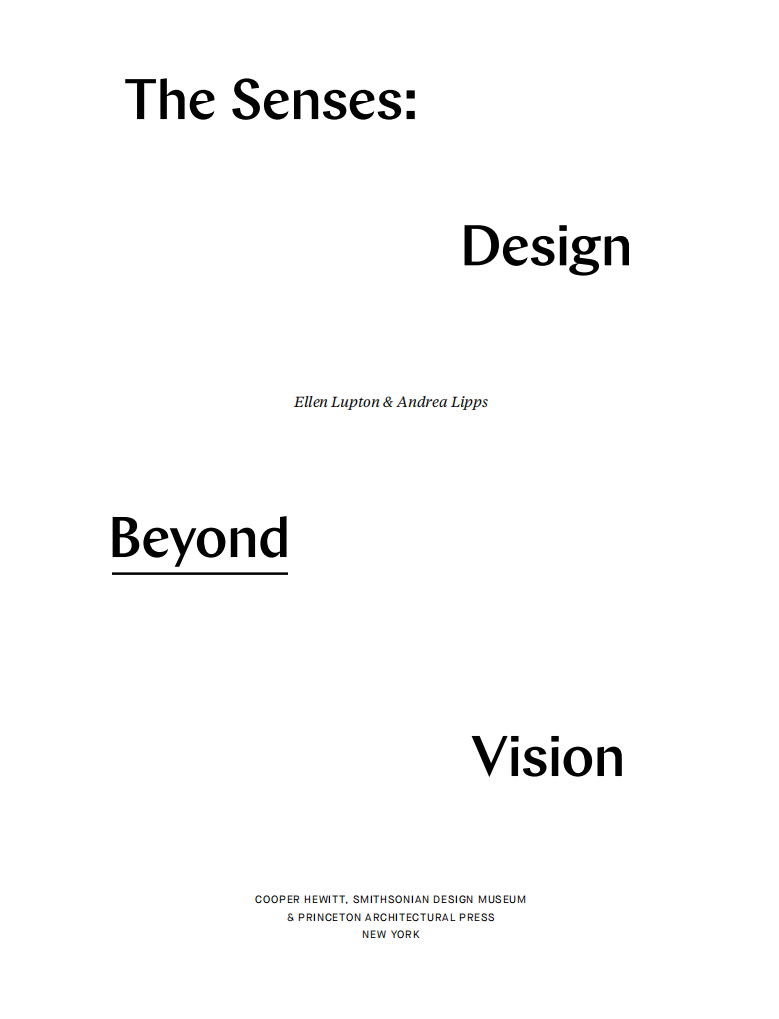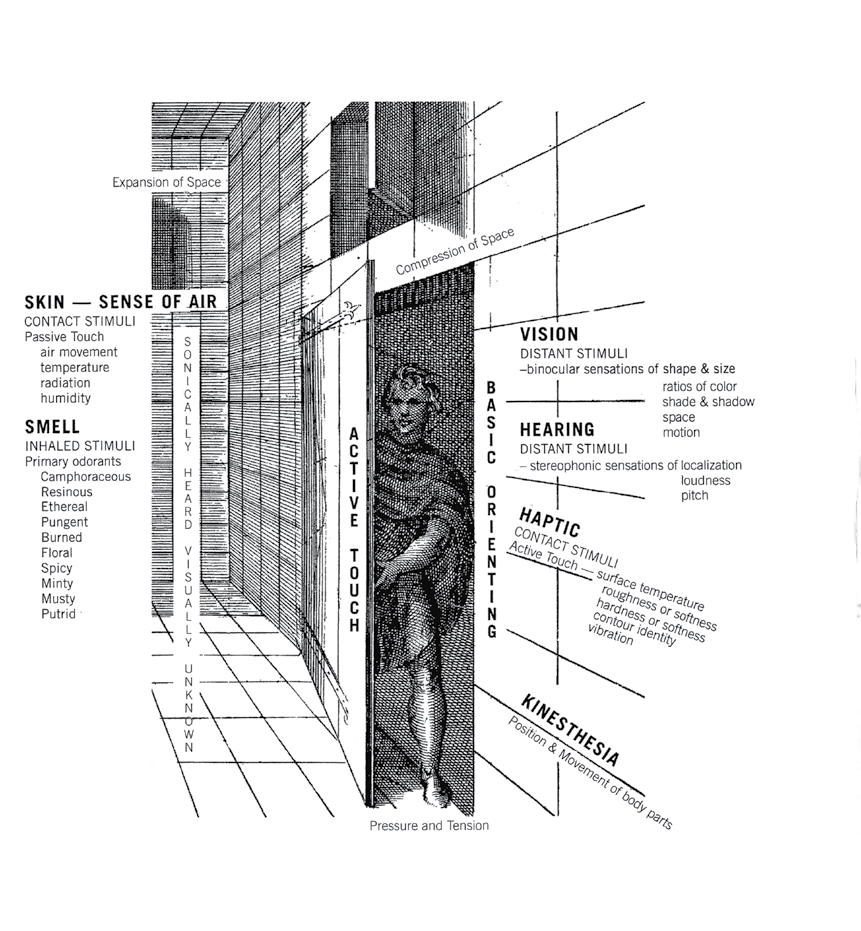
FOREWORD
Caroline Baumann, Director
Cooper Hewitt, Smithsonian Design Museum
Design is extending the realm of the senses. Experimenting with new and familiar materials, customizing products, and embracing the differing needs and experiences of users, contemporary designers are realizing newfound sensations and capitalizing on our extraordinary powers of perception to enrich and improve daily life. The Senses: Design Beyond Vision—the book and exhibition of the same name—explores the fertile territory of multisensory design and deepens understanding of its value. When we use our creative insights into the senses to expand access to information, products, and environments, we also expand the discourse on inclusive design.
Conceived and curated as an interactive environment alive with scientific fascination and aesthetic wonder, The Senses amplifies the intimate link between design and sensory experience. Accessible to visitors of all abilities and backgrounds, the exhibition invites visitors to see, hear, touch, and smell design. Inventive projects, products, and installations—created by a global roster of designers and thinkers—range from the practical to the playful, with each encounter activating the creative synergy of brain and body. A digital animation translates bird songs into bursts of color and motion. A light installation changes from cool to warm in response to visitors’ movements. Vessels explore the sonic and tactile properties of glass. When designers open up to multiple sensory dimensions, products and services reach a greater diversity of users. Maps that can be touched as well as seen facilitate mobility and knowledge for sighted and non-sighted users. Audio devices translate sound into vibrations that can be felt on the skin. Tableware uses color and form to guide people living with dementia.
Beautifully written and a compelling journey in and of itself through the senses, this book does far more than document the contents of an exhibition. It is a provocative manifesto for inclusive design.
Cutting-edge methodologies and emerging design guidelines appear alongside insights drawn from scientific research. Essays by Sina Bahram, Hansel Bauman, National Design Award winner Bruce Mau, and others explain how sensory design can help build more rewarding and inclusive experiences.
The Senses joins with Cooper Hewitt’s campus initiatives to broaden access to the museum and engage the public in design’s contribution to expanding accessibility. Toward that end, we are iterating to make Cooper Hewitt’s exhibitions and resources as broadly available as possible. Partnerships with leading organizations, including New York University’s Ability Project, New York City’s Mayor’s Office for People with Disabilities, Columbia University Digital Storytelling Lab, Mark Morris Dance for Parkinson’s, and Google, are helping us build out our network of knowledge and expertise. In our galleries, we are exhibiting the latest developments in adaptive and universal design products and organizing collaborative spaces for experimentation and learning, emphasizing that—in every discipline of design—accessibility is essential for innovation.
The Senses: Design Beyond Vision is made possible in part by support from Barbara and Morton Mandel Design Gallery Endowment Fund, Ehrenkranz Fund, Amita and Purnendu Chatterjee, and New York State Council on the Arts with the support of Governor Andrew M. Cuomo and the New York State Legislature. Special thanks to Wendy Evans Joseph and her Studio Joseph team for their wondrous, immersive exhibition design and David Genco for his thoughtful design of the book and the exhibition’s graphics. Senior Curator of Contemporary Design Ellen Lupton and Assistant Curator of Contemporary Design Andrea Lipps — an unbeatable creative team—forged fresh ways to interact with museum content and extended the exhibition’s impact through their evocative texts. Harnessing the power of the senses, we heighten our abilities to further design’s reach and influence.

